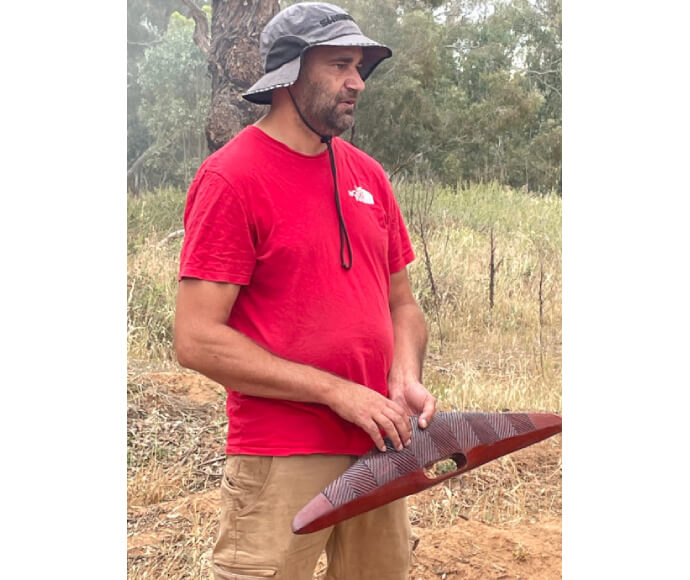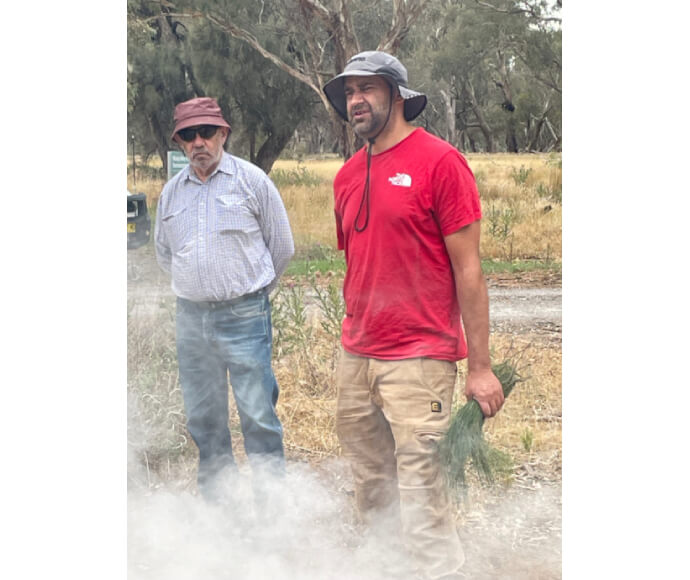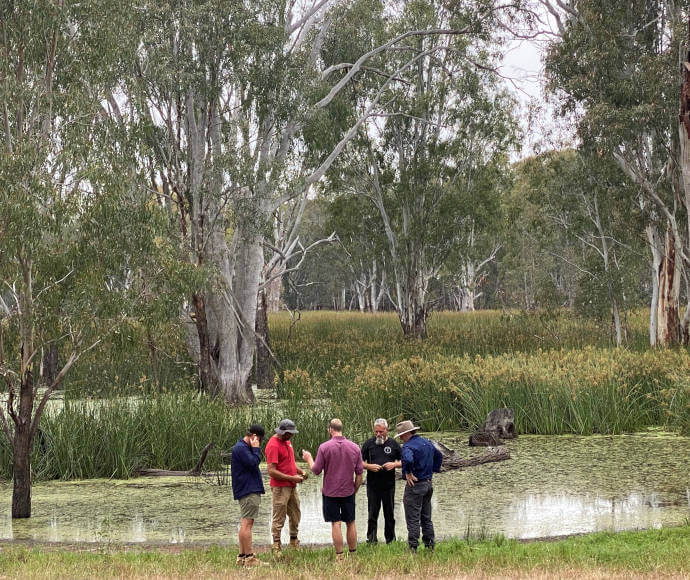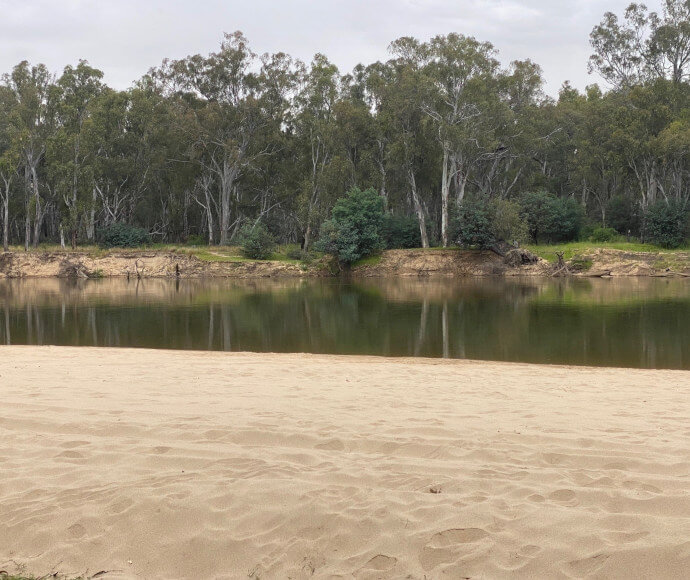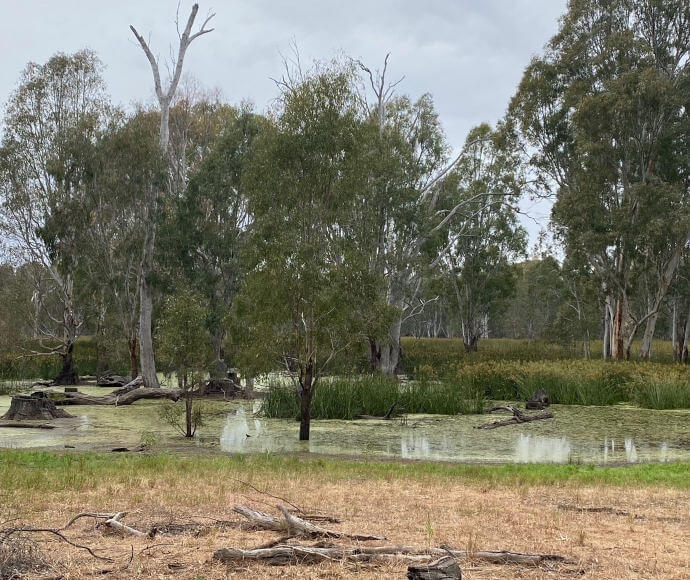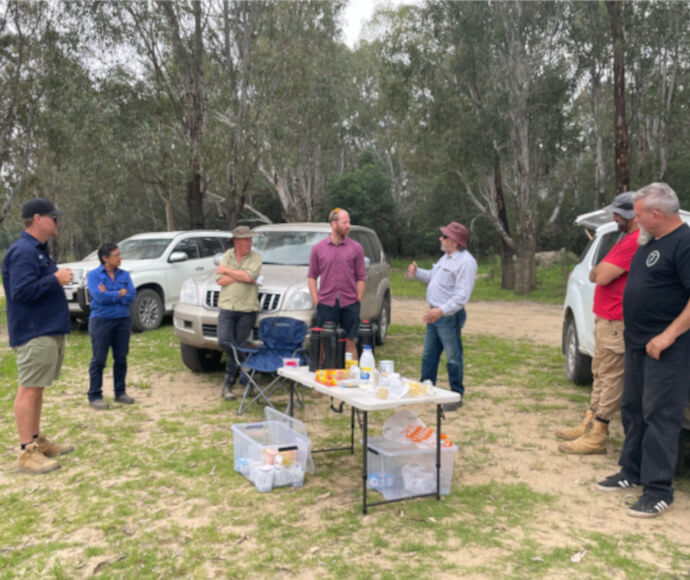On 28 November 2023, the Murray and Lower Darling Environmental Water Advisory Group (EWAG) attended a field trip to Boomanoomana Forest, which is one of the regional parks located along the Murray River between Corowa and Barooga.
On Country
Members of the Bangerang nation welcomed EWAG members on Country and conducted a smoking ceremony in language. They spoke about respect for and connection to Country. They shared their knowledge about life on the waterways, including the significance of fire, construction of canoes and coolamons, and the use of tools, gathering food, hunting, and fishing methods. They explained the traditional clan roles of men and women. Bangerang Elder Kevin Atkinson shared with EWAG members, ‘Our vision is to all work together because we all share a passion for the environment and ensuring it is here for future generations.’
Sand and erosion
EWAG members visited Buchanans Beach, witnessing firsthand the impacts of riverbank erosion and sand deposits along the Murray River. An enormous plume of sand slowly moving down the Murray River has reduced the capacity of the Barmah Choke by 20 to 30% over the past 20 years. The major flood in 2022 has exacerbated the issue with new sand deposited on most beaches from Yarrawonga Weir to Scott’s Beach in Millewa Forest. Since 2022, greater volumes of sand have moved into the Barmah Choke, which reduced the river’s capacity even further. This is restricting the ability for river operators to meet the increasing demand for consumptive water ‘below the Choke’ and to deliver water for the environment to key ecological assets along the Murray River.
The sand and bank erosion are significantly impacting the cultural and environmental values of the river system and floodplains. The group discussed the potential of the Yarrawonga to Picnic Point section of the Murray River as an area important for the survival and recovery of native fish populations, because this area is not impacted by hypoxic blackwater. Building populations of native fish by improving flow, connectivity and habitats in this area can help downstream populations recover. EWAG members agreed to support riverbank remediation works at sites identified by Traditional Owner groups such as the Bangerang nation.
Boomanoomana Swamp visit
Visiting the Boomanoomana wetland, EWAG members discussed the site’s potential to be managed collaboratively with local Aboriginal groups. This would allow for the site to be used for Cultural activities, and for Aboriginal people to have input on timing and duration of environmental water events and other activities (such as burning and vegetation management) that will help to enhance the cultural values of the site. Water for the environment can be delivered to the wetland from the Murray Irrigation system. Boomanoomana is one of the few remaining open (treeless) wetland sites in the Murray–Lower Darling catchment.
Operational update
Water storages were relatively full, with unregulated flows in October giving the system a head start for the season. In and around unregulated flows, water for the environment was used to support Murray cod breeding, and connectivity to Barmah, Millewa and Werai forests. The Murray Darling Basin Authority is trialling the delivery of 500 megalitres per day of operational water from Lake Cawndilla to the Murray River via the Great Darling Anabranch, with the associated additional conveyance losses debited against environmental water holder entitlements. The event will provide positive environmental outcomes for the Great Darling Anabranch and also help river operators to meet supply demands in the Lower Murray.
